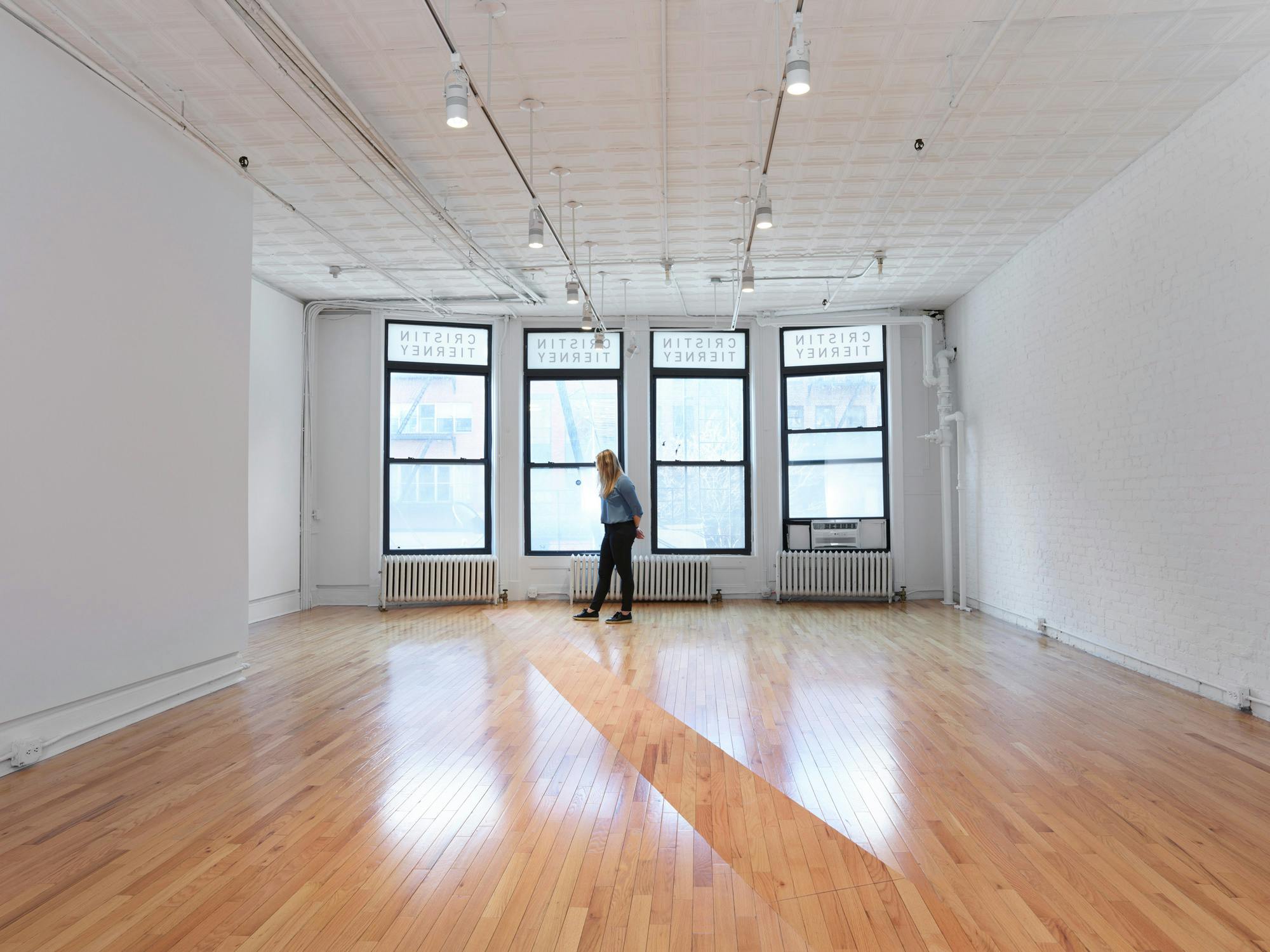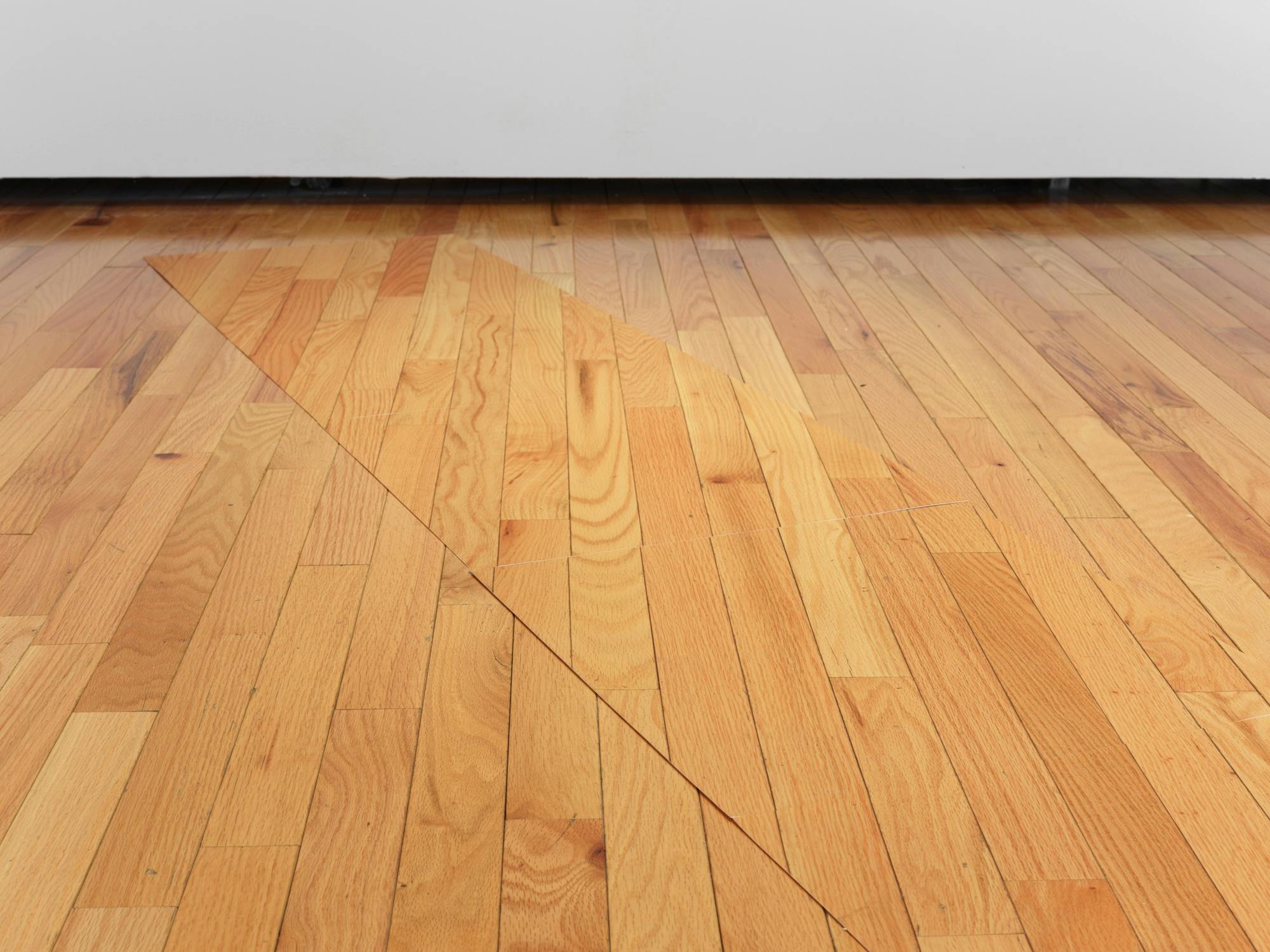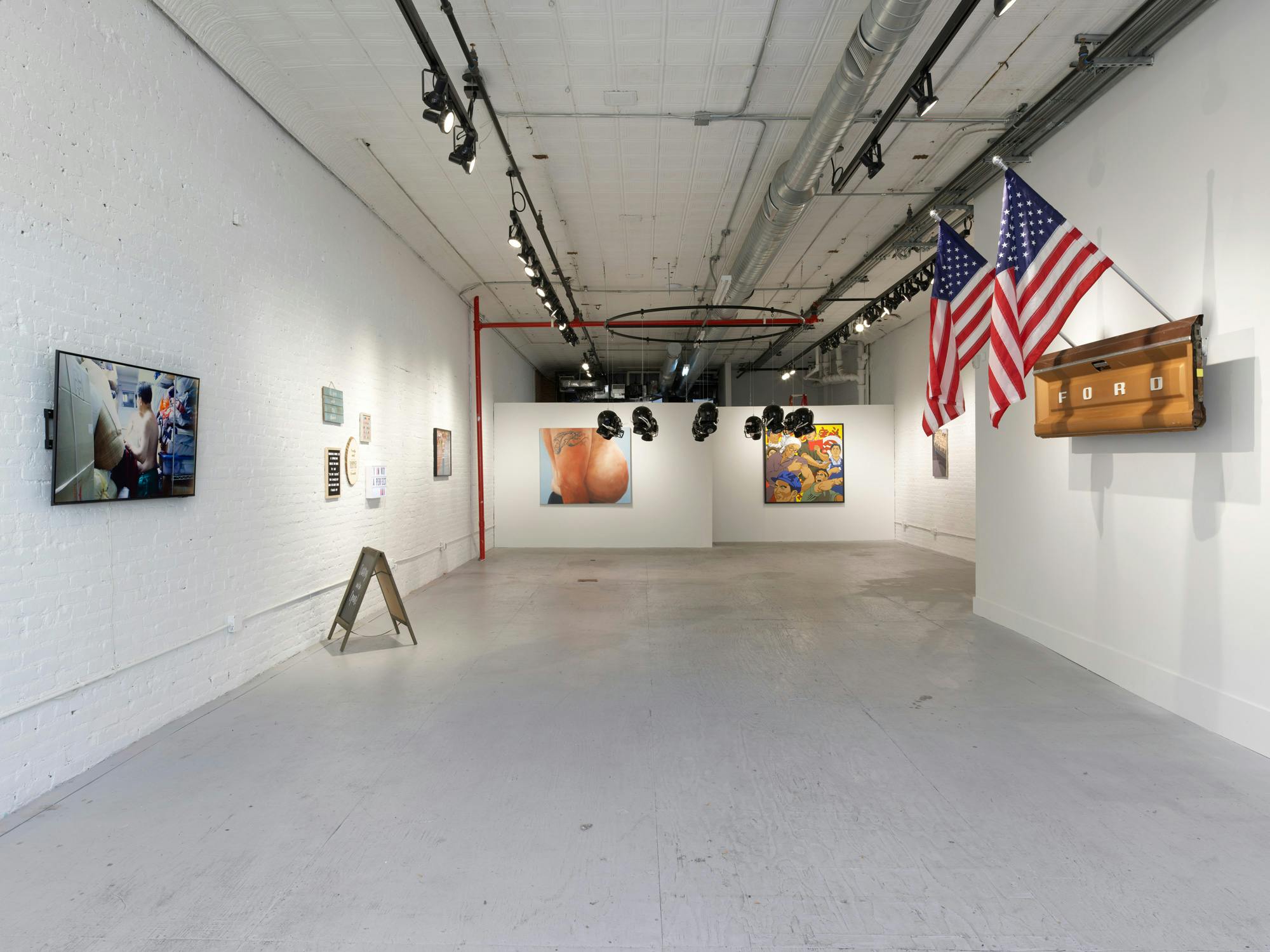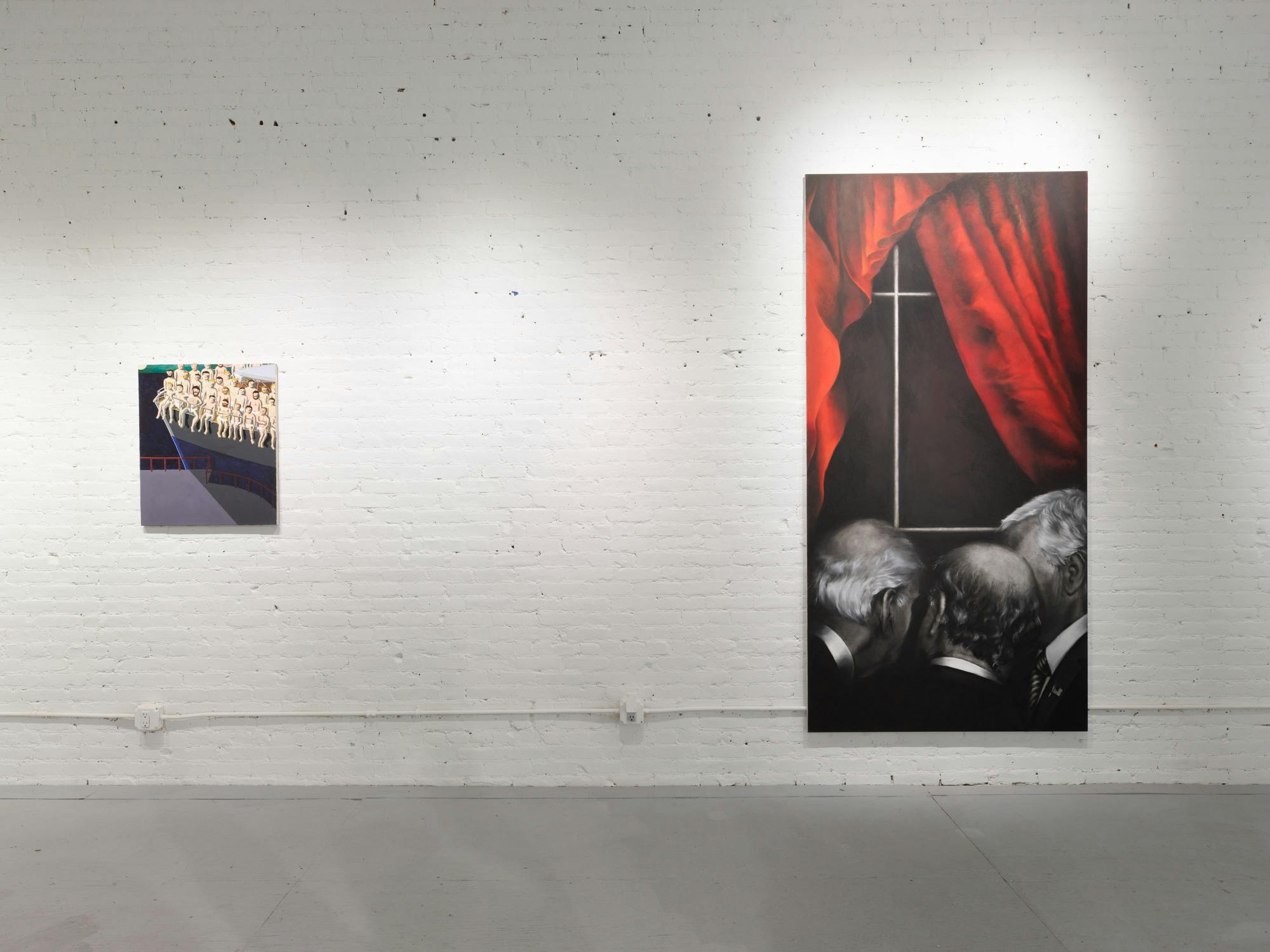Published December 5, 2023
How the Art World is Evolving: A Conversation with Cristin Tierney
With a global perspective and an emphasis on scholarship, connoisseurship and discretion, Cristin Tierney has run a contemporary art gallery in New York since 2010. She is active in both the primary and secondary markets and she has also served as an advisor to private collectors and institutions since 2000. During her years as a gallery owner and private advisor, she has hosted and curated nearly seventy exhibitions, including presentations of work by Victor Burgin, Joe Fig, Helen Lundeberg, Jorge Tacla, and Dread Scott in addition to five gallery exhibitions with groundbreaking video artist peter campus (who styles his name as such). Cristin Tierney Gallery supports a robust program of educational events and scholarly endeavors, with special attention on the creation of artist exhibition catalogues. Prior to founding her advisory firm, Tierney was a consultant at Christie’s Auction House for many years and co-authored the MA curriculum for the Christie’s Education program. She has taught graduate level seminars on the history of the art market as well as undergraduate art history at New York University. Tierney has served on the boards and committees of numerous non-profit organizations including Reynolda House Museum of American Art, Wake Forest University, the Association of Art Museum Curators, and the Lower East Side Printshop. Nearly twenty years ago, I had the pleasure of working for Tierney to lead a collectors seminar and it was a joy to catch up with her during this interview last month.
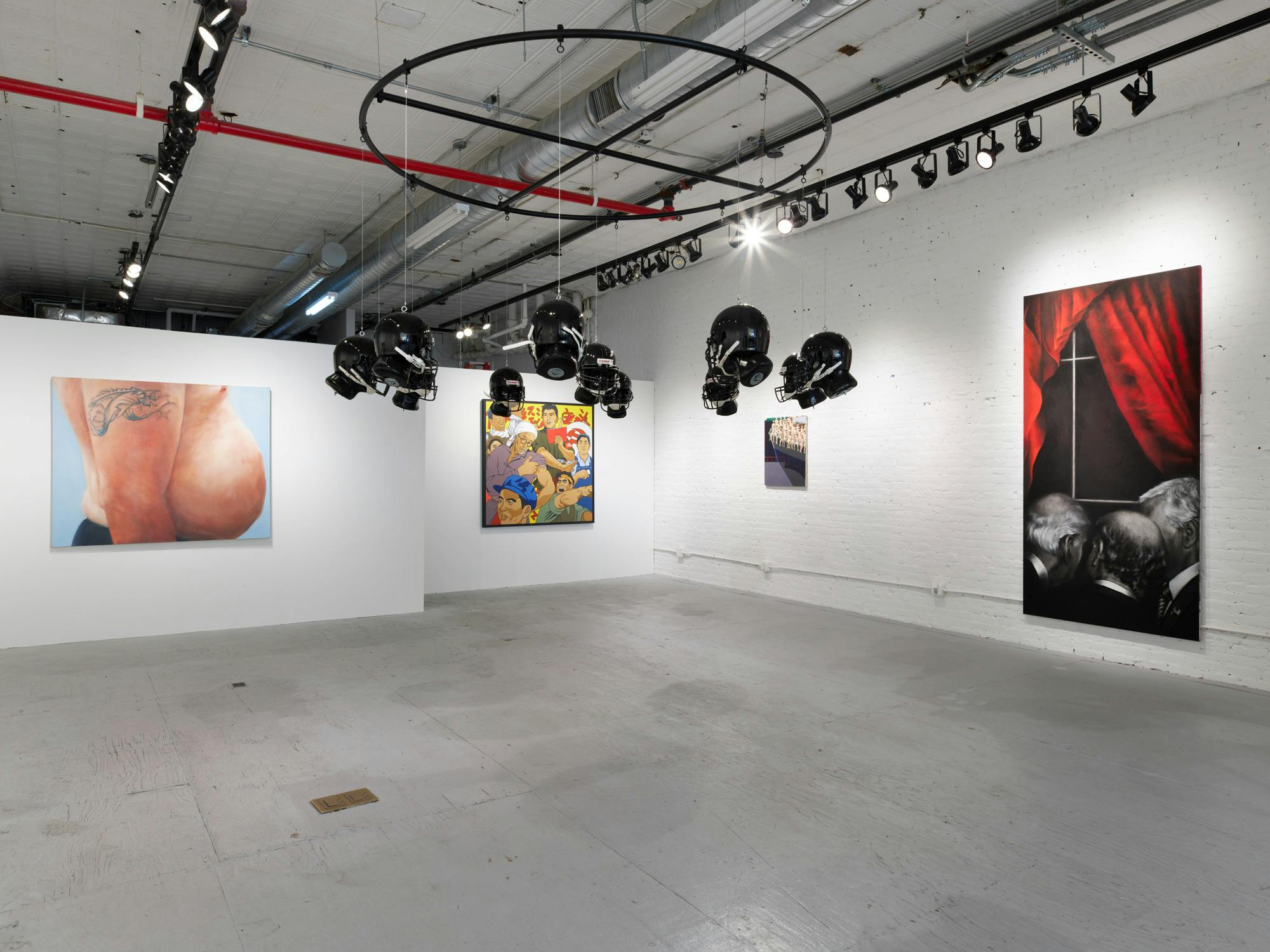
What is the first thing we should be talking about today with respect to the art world?
CT: Gosh, there are so many things that we could be talking about, right? I think a valid question is: what is the art world these days? I feel a lot of times when we are reading about the art world, it’s really the art market. It’s not the creatives, it’s not the people who do all the heavy lifting around the creatives to get the art seen, to get the art shown. It’s funny because that is bigger than ever. There are more artists than ever, there are more art handlers, photographers, studio assistants, people around the artists, and yet it seems to get talked about less and less. Art really seems to get written about less and less, and instead it’s more about the machine that buys and sells artworks. I do think that’s a real problem. I just recently listened to a podcast from Artnet News with Ben Davis, who I love. He had written a two-part article on the crisis of criticism. On the podcast they were talking about how nobody really writes anything negative … and I thought to myself, yes that’s all true I suppose. But the real crisis is the fact that almost no major publication in this country thinks it’s necessary to employ someone full-time to do this. The idea of an art critic, somebody who is paid to actually think and reflect about art and communicate ideas through their form of cultural critique, almost doesn’t exist anymore. There are so few people who occupy those positions, and nobody is willing to pay for it. Artforum still pays pretty much what they paid when I was in graduate school a really long time ago. I look around at things like that and I am mystified, because on the other hand there is plenty of money for art fairs, and there is plenty of money coming and going out of the auction houses, but the whole idea that the actual production of art, and therefore the production of meaning, or at least the exploration of intent in that broader set of ideas, it’s not where the emphasis is—and it should be.
Thank you, this is brilliant. This is exactly the conversation I anticipated.
CT: I think I am just cranky.
You are in it! And you understand it from a sincere place. I love what you have positioned as the first thing to talk about: what is the art world? With that wonderful intro I want to bounce to a question that relates to how you have ended that thought. For all the years that I have been professionally involved in the legitimate sector known as the art world, I am still intrigued by the “smoke and mirrors” aspect of this industry. Do you have any thoughts about this?
CT: There is lots of it, for sure. I go back and forth about how I feel about this, where I think it matters. I read something recently about the auction houses and how intensely they want to keep their clients' names private. They don’t want you to know who bought these things and where they are going and all of that. I do think there is something to that, auction houses and art dealers are often criticized for that, for being so secretive and for being so quiet about who these people are. But in my experience, it’s because those people want you to keep your mouth shut. We get told by clients all the time: discretion, discretion, discretion. You hear it a lot. It doesn’t come from nowhere, and these are many of the same people who buy the art. They don’t buy it themselves. They buy it through an LLC or a trust. There is always some kind of tax mechanism set up to acquire the art, you are not buying as a person anymore. I understand those things. It does, as you said, feel like a whole lot of “smoke and mirrors” and it’s almost like an obsession with avoiding paying taxes. That astonishes me.
Thank you for your candor on all of this. Please share with us your current projects and focus. What is taking center stage at Cristin Tierney these days?
CT: We had one very significant historical show that happened in the beginning of the year, and now we are going to end with another important historic show. The first one was Victor Burgin and we showed a piece called Photopath (1967-69). I am proud of everything that we do at the gallery, I am proud of all the exhibitions that we produce, but some of them really hit home more than others. Victor is 81, he has a survey that just opened at the Jeu de Paume. He lives in Paris so that’s a very big deal for him. He is a conceptually grounded artist who makes non-traditional artworks—a lot of them are video projection and things that are not easily commodified. The works ask really big questions. Photopath (1967-69) is an absolutely iconic work of conceptual art. It’s rarely been exhibited but it’s one of those artworks that has been illustrated a million times and actually hasn’t been shown as much as you think it has. A monograph was just published solely on that work of art at the start of the year. This really wonderful, significant, historic piece was shown in the gallery all by itself, just one work of art from the late 1960s. That was an incredible way to kick off the year, and we produced a video that talks about how it was made, its history, and an archive kit that comes along with it. We are hopefully going to be placing it with an institution soon.
Fantastic!
CT: [This piece] has all the bells and whistles that, as an art historian, you get pretty excited about. The last show of this year that we are going to open at the end of October is one work of art again, peter campus’ video Three Transitions, which is celebrating its 50th anniversary.
This is a big deal, these two shows in one year, these two thundering artists.
CT: I know, and the feminist in me is like “it’s all about the guys this year,” but it is all about the guys sometimes, you know?
You are making a statement with these presentations.
CT: It’s so fun talking with each of them about when it was first shown, how they thought these works would be perceived versus where they are now 50+ years later. It’s crazy.
It’s amazing about this progression in our lifetime, especially with new platforms for presenting art, and that leads me to the next question: this curiosity about how you develop these relationships. How is it that you are working with these artists and your roster of artists?
CT: It’s organic. peter was our very first show at the gallery when we opened in 2010. He’s of a certain generation, he is very well known as a time-based media slash conceptual artist, and I think starting there really helped form a kind of foundation for other artists and other works to build on. And that’s really what you do: you start with a few artists, and they weave and connect to other artists, either because they know them personally or because their works are closely associated. Or because, for example, I saw peter’s work in a museum show and it was also in relation to this artist, and that makes me think about that artist, and in doing research I find out they don’t have a gallery, so on and so forth.
There are also super fun things, like the work trips that are part celebration of one artist and part researching and finding out about another artist. We went to Portland in August for the opening of Converge 45. Two of our artists Jorge Tacla and Malia Jensen are in that show. It’s a Portland Biennial, it's Portland style, so it’s all over the city and they are all these conceptual projects. We had two artists in that show, and when we went out there, we scheduled visits with a bunch of other artists. Talking about the boys, we have a group show that opened on October 13th called Seminal: Masculinity in Contemporary Art. Two of the artists that we visited in Portland, we saw works in their studio that were too perfect for this show. There’s a good example: we don’t represent those artists; we are just getting to know them, and this group show provides a great context. The travel that we did on behalf of those other artists also was a way for us to make connections with new people, new ideas, and new studios.
I think this is a primary concern for many artists making their way, trying to understand the landscape. It’s a diverse landscape, especially with the online scenario. This is a novel experience for everyone, and Testudo is an online platform. Do you have any comments about online buying, online platforms, and advice for younger collectors who are doing most of their shopping online?
CT: I think it’s hard to do everything online. What I always say to people is: these platforms, these online worlds, they are one more tool in your toolkit. You still have to see art in person, right? You still have to experience culture in the real world, but these online platforms provide lots of access that we didn’t have previously. Talking about these artists in Portland, we were able to look at their work and get a sense of who they are and really learn a lot about them before we went to Portland because we have online platforms. I do think that the best kinds of platforms to use are the ones like Testudo, where it’s not just “here’s some stuff for sale” and where it’s not just “here are 10,000 artworks for you to peruse.” They also have critical writing, reflective thinking, and content that gives you a way in, that helps you—whether you agree with it or disagree with it—and gives you ideas to bounce your ideas off of.
That and a sense of community building in these ways, and the vibe of these different online platforms.
CT: Some of them are very generic and others are more as if people are thinking for themselves in this realm, in this community.
I agree that community is the most important thing that we are cultivating in these times. I want to back up to your beginning in the art world as an advisor. What are the advisory conversations that you are having these days?
CT: I am having conversations about the next generations within a family: what does that look like? What does that mean? They are gratifying conversations to have, and I can’t believe I am at a point in my career where those conversations even happen. But they are also important because some of our advisory clients have been collecting for a long time, they are really serious about what they are doing, and generally speaking they are all attached to one institution, if not several. And the whole question about how much of what they built becomes part of an institution, how much of it continues with the next generation. What does that mean? I have one client whose kids are not really that interested in the art, but the grandkids are.
It’s inspirational to hear you thinking about long-term alignment with institutions versus family desires and obligations—these are complex discussions.
CT: Yes, and I have several clients where we are going through a big planning process, which is great. But one of our important clients for many years was the Anita Reiner estate. When she died—she was older, but she died unexpectedly—she died sort of inter-estate and had four children, each with varying degrees of interest in art and varying knowledge about art. We spent years working with them to sort through the collection.
Indeed, the next stage of life and legacy conversation. Bouncing around with my questions and the new models in place for younger artists, for example, friends of mine are participating in art fairs that offer a “pay to play” model. Do you have any thoughts about this?
CT: It’s tough, I guess I am old-school. I feel like artists should be taken care of. I feel like artists shouldn’t be paying for that. That platform should be supporting artists. It used to be that the gallery was the major platform in the model. There are so many of these art fairs, and on the one hand I think it can be good for the right artist, an artist who is really interested in taking control of their career and is outwardly focused as much as they are inwardly focused. It can be a great tool for them and there are all kinds of new models for working with galleries, where yes there is representation, but there is also just more casual working relationships. Now there are even these companies that work with artists as agents. I am not sure how I feel about them, since obviously that’s a lot of what we do at the gallery. But on the other hand, I think more choice is ultimately better for artists. The more opportunities and ways in which you can present your work, the more opportunities and ways there are for you to get your message across, the better it is for you. I am going to be a total art history dork—in 1867 there was a huge World’s Fair in Paris, and of course Édouard Manet, the enfant terrible of the Parisian art world, was not invited to attend, not invited to participate, big fat no. So, he got some money together and basically built his own space and hosted his own retrospective of his work. Fifty artworks by Manet. He wrote almost nothing during the course of his career as an artist, but he wrote a short statement for this exhibition and the first sentence of that statement is “montrer est la question vitale” or “to exhibit is the vital question,” that idea that artists need to show their work, artists need to get their work out there, they need to say what they want to say. That’s the crucial point, it’s the key question, and it’s still true today.
This is a brilliant reference, and these backstories embolden our love of the theatrics and distinct histories of the art world. Yes, these new tools in the toolkit provide ways for artists to expose what they are doing and to make these connections. To back up again, in a 2010 interview with Randy Gladman for Akrylic you said: “Anyone who opens an art gallery is a little bit crazy, although I prefer to think of myself as ‘colorful.’ It is something one does for love not money. Are we really perceived as cutthroat? I think of the gallery system in New York as a really collegial place. I suppose from the outside looking in, other gallerists are competition, but from the inside looking out, those same people are some of your biggest supporters.” Do you still feel this way?
CT: Yes, 110%. I would not have made it this far without my colleagues. You need people you can call up and say: “I need to ask you something,” which is like once a week. At least once a week in the art world you get hit with something that you’re like, “What?!” Having people you can talk things through with, having people who understand the same set of business challenges that you face. Having somebody who says: “I saw the show, great job,” when you know it’s coming from a point of view of knowledge and understanding. I was saying this the other day: compliments from your peers are super important. I think I stand by that, when times get tough and your deal pipeline starts to dry up, often it’s your fellow art dealers who help you get deals done and help make things happen with you, and you do the same for them.
I think for many people there is a mystique about how this commercialized art world operates and the kind of exclusivity about those workings. Perhaps it’s not as removed as some might think with respect to that camaraderie that you have described.
CT: I think sometimes we get too caught up, and we read too many Artnet News articles, and the drama is crazy!
Indeed, the drama of the art world is just fascinating.
CT: Right, these crazy things, but that’s not most of us. Most of us, at the end of the day, just want to have a drink and giggle a little bit and talk about the show we just saw. This week, all anybody wants to talk about is the Barkley Hendricks show at the Frick, which is an amazing exhibition (Barkley L. Hendricks: Portraits at the Frick on view through January 7, 2024). And it’s just two galleries of Hendricks’ work. It’s not a big show, but it’s something we can all appreciate and we are all birds of a feather in this way. After we get done chitchatting about whatever scandal Artnews has presented to us this morning, then it’s also just: “Ok, did you see the Barkley Hendricks? Is it not amazing?” We are alright!
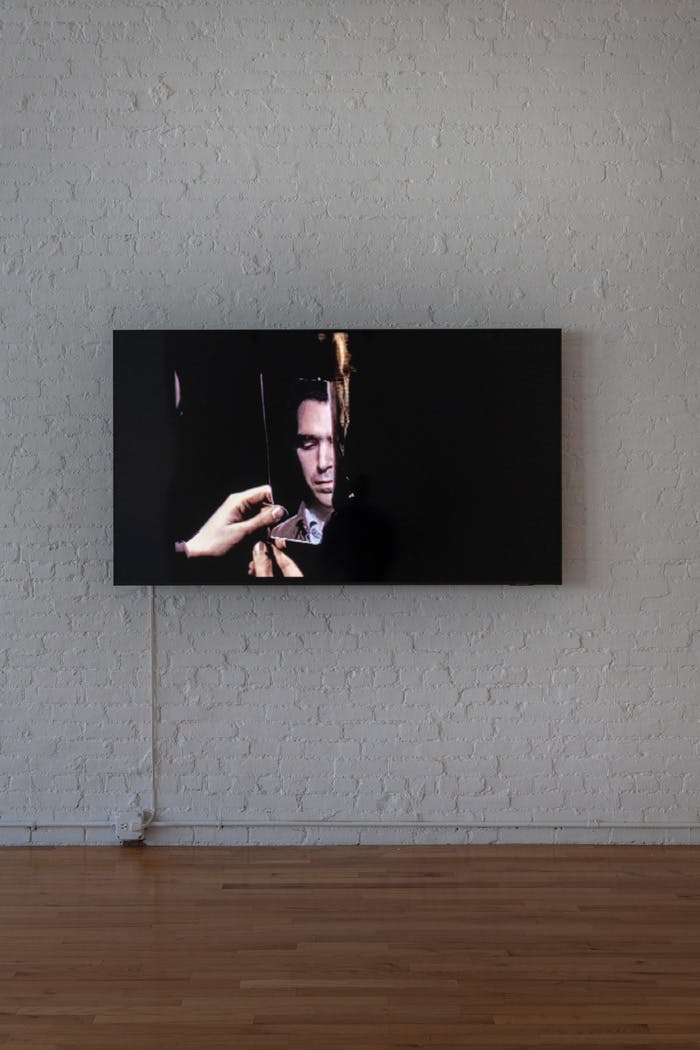
It’s incredible to see what you have done in the years that I have known you: for one, you moved your gallery from Chelsea to the Bowery. Do you have any comments on that switch?
CT: It was a big switch and a big decision. It’s a totally different vibe and I am down for that. For as much as I liked being in Chelsea, and a lot of my peers and people I grew up with in this world are working in Chelsea, that’s a changing community. Chelsea doesn’t really feel that much like a neighborhood, whereas on the Bowery, it’s a neighborhood. There is also a lot of retail besides the art retail in our neighborhood that makes it feel a little more classically New York and there is something really nice about that. Also, the restaurants! We moved down to the Bowery and gained five pounds in the first month.
I appreciate where you are coming from with your knowledge, your depth of perspective as an art historian, and your years of experience as a professional. Thinking about trends, what is the thing that is most exciting for you in this art world right now?
CT: I would say it’s partly how things have opened up. Not only has it opened up in an intellectual sense or an institutional sense, but also in a market sense. I finished undergrad [at Wake Forest University] and went into grad school [at NYU] in the early ‘90s. In fact I graduated the year of the politically correct [Whitney] Biennial [in 1993] and it was a lot of art about identity and identity politics. It was a biennial that a lot of people argued about and there were big debates about what’s the place for these greater social and political strands of thought in the visual arts. It was also the tail end of the culture wars, so the sort of political aspect of art was, for me, really something real. As a feminist, as someone who was raised by feminist scholars, those were really important questions. I started working in non-profits, then went into the auction house, and in the auction world, you had all those people that believed those things, but couldn’t sell any of those artists and their works at auction. We were still part of the world of selling the dead and mostly-dead white males, so you had this bifurcation. There were all these people running around in the art market who really wanted to embrace something different professionally, but there just wasn’t any room for it. Those people gradually became more and more senior, and I think the interesting thing is that for a lot of us, we decided: if I can’t do this at Christie’s Auction House then I am just going to buy these works myself. I am going to put my money where my mouth is and collect some of the artworks or help museums acquire them. It was happening before the pandemic, but the pandemic and Black Lives Matter as a movement really pushed that way of thinking. There is a place for everybody in this art world. The art world is global. There is room for all genders and races and ethnicities and people from all different walks of life and all different places and all different positions. And this work is not just stuff that’s important to think about, but it’s actually stuff that you should be collecting, that you should be bringing to museums and institutions. Seeing that happen, it was like a long low wave that was coming in quietly and then all the sudden just crested and crashed. It’s amazing!
The lid has been ripped off and everything is being re-evaluated. I think this speaks to the Testudo crowd and the consciousness of today. It has been a joy to hear your idea! One last personal question, what are your methods for cultivating personal well-being in these times?
CT: That’s a good question, and one that I have been thinking about a lot lately. Even during the pandemic, I didn’t reflect on that as much as I have this year. I think telling yourself, over and over again, to give yourself a break, to calm down, to recognize that you can only do so many things in a day.
Testudo is always looking for more voices to write with us about the art world. If you’d like to pitch an article, please see our pitch guide for more information!
